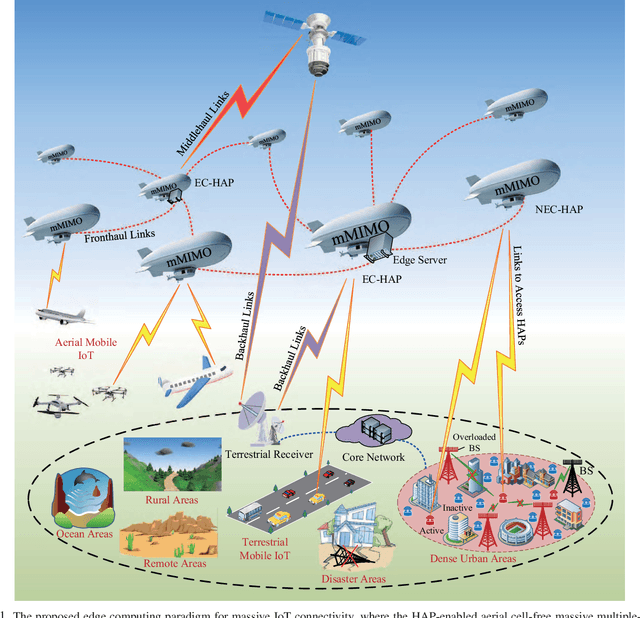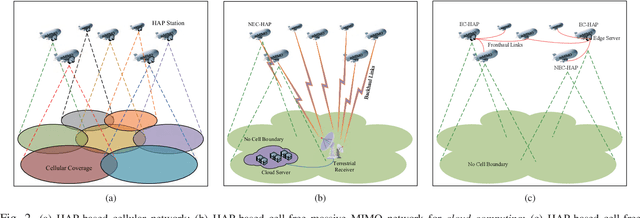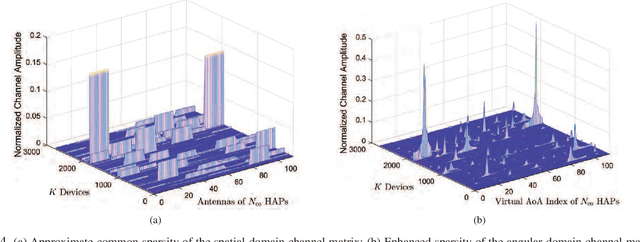Malong Ke
Compressive Sensing-Based Grant-Free Massive Access for 6G Massive Communication
Nov 12, 2023Abstract:The advent of the sixth-generation (6G) of wireless communications has given rise to the necessity to connect vast quantities of heterogeneous wireless devices, which requires advanced system capabilities far beyond existing network architectures. In particular, such massive communication has been recognized as a prime driver that can empower the 6G vision of future ubiquitous connectivity, supporting Internet of Human-Machine-Things for which massive access is critical. This paper surveys the most recent advances toward massive access in both academic and industry communities, focusing primarily on the promising compressive sensing-based grant-free massive access paradigm. We first specify the limitations of existing random access schemes and reveal that the practical implementation of massive communication relies on a dramatically different random access paradigm from the current ones mainly designed for human-centric communications. Then, a compressive sensing-based grant-free massive access roadmap is presented, where the evolutions from single-antenna to large-scale antenna array-based base stations, from single-station to cooperative massive multiple-input multiple-output systems, and from unsourced to sourced random access scenarios are detailed. Finally, we discuss the key challenges and open issues to shed light on the potential future research directions of grant-free massive access.
Next-Generation URLLC with Massive Devices: A Unified Semi-Blind Detection Framework for Sourced and Unsourced Random Access
Mar 20, 2023Abstract:This paper proposes a unified semi-blind detection framework for sourced and unsourced random access (RA), which enables next-generation ultra-reliable low-latency communications (URLLC) with massive devices. Specifically, the active devices transmit their uplink access signals in a grant-free manner to realize ultra-low access latency. Meanwhile, the base station aims to achieve ultra-reliable data detection under severe inter-device interference without exploiting explicit channel state information (CSI). We first propose an efficient transmitter design, where a small amount of reference information (RI) is embedded in the access signal to resolve the inherent ambiguities incurred by the unknown CSI. At the receiver, we further develop a successive interference cancellation-based semi-blind detection scheme, where a bilinear generalized approximate message passing algorithm is utilized for joint channel and signal estimation (JCSE), while the embedded RI is exploited for ambiguity elimination. Particularly, a rank selection approach and a RI-aided initialization strategy are incorporated to reduce the algorithmic computational complexity and to enhance the JCSE reliability, respectively. Besides, four enabling techniques are integrated to satisfy the stringent latency and reliability requirements of massive URLLC. Numerical results demonstrate that the proposed semi-blind detection framework offers a better scalability-latency-reliability tradeoff than the state-of-the-art detection schemes dedicated to sourced or unsourced RA.
An Edge Computing Paradigm for Massive IoT Connectivity over High-Altitude Platform Networks
Jun 25, 2021



Abstract:With the advent of the Internet-of-Things (IoT) era, the ever-increasing number of devices and emerging applications have triggered the need for ubiquitous connectivity and more efficient computing paradigms. These stringent demands have posed significant challenges to the current wireless networks and their computing architectures. In this article, we propose a high-altitude platform (HAP) network-enabled edge computing paradigm to tackle the key issues of massive IoT connectivity. Specifically, we first provide a comprehensive overview of the recent advances in non-terrestrial network-based edge computing architectures. Then, the limitations of the existing solutions are further summarized from the perspectives of the network architecture, random access procedure, and multiple access techniques. To overcome the limitations, we propose a HAP-enabled aerial cell-free massive multiple-input multiple-output network to realize the edge computing paradigm, where multiple HAPs cooperate via the edge servers to serve IoT devices. For the case of a massive number of devices, we further adopt a grant-free massive access scheme to guarantee low-latency and high-efficiency massive IoT connectivity to the network. Besides, a case study is provided to demonstrate the effectiveness of the proposed solution. Finally, to shed light on the future research directions of HAP network-enabled edge computing paradigms, the key challenges and open issues are discussed.
 Add to Chrome
Add to Chrome Add to Firefox
Add to Firefox Add to Edge
Add to Edge